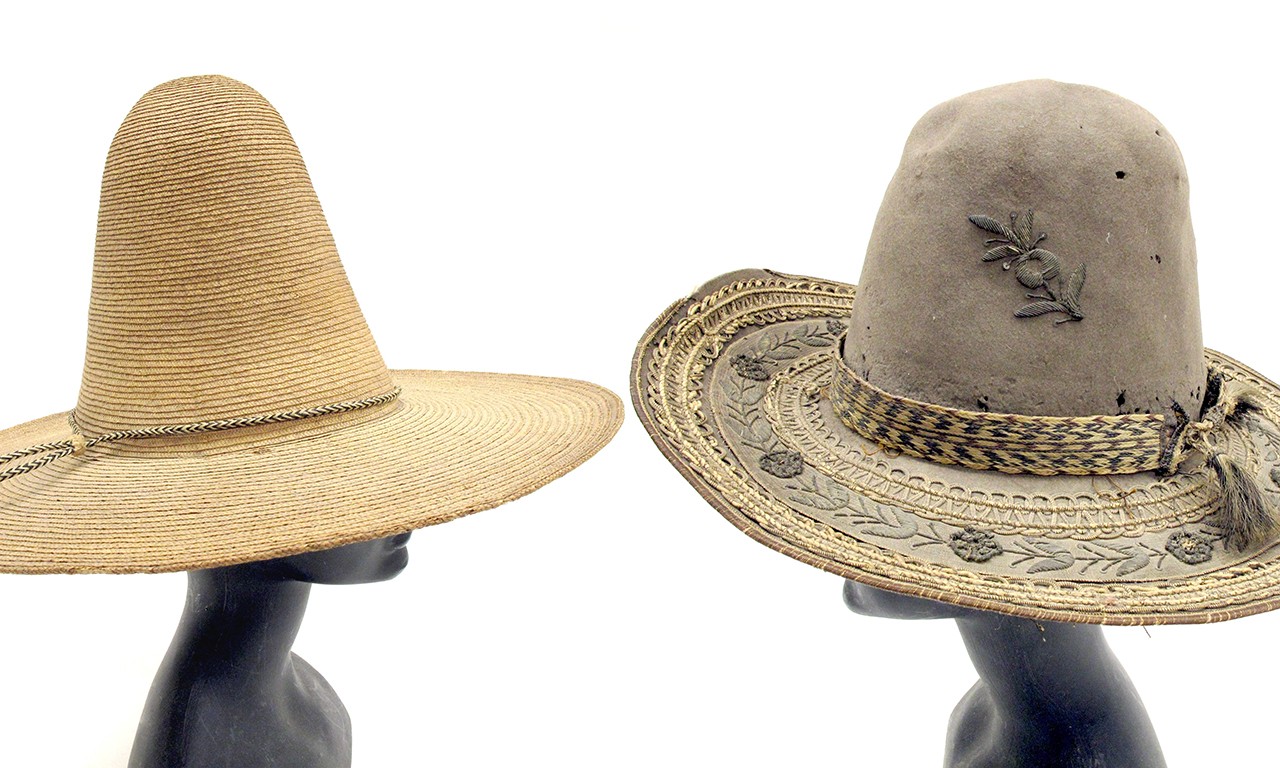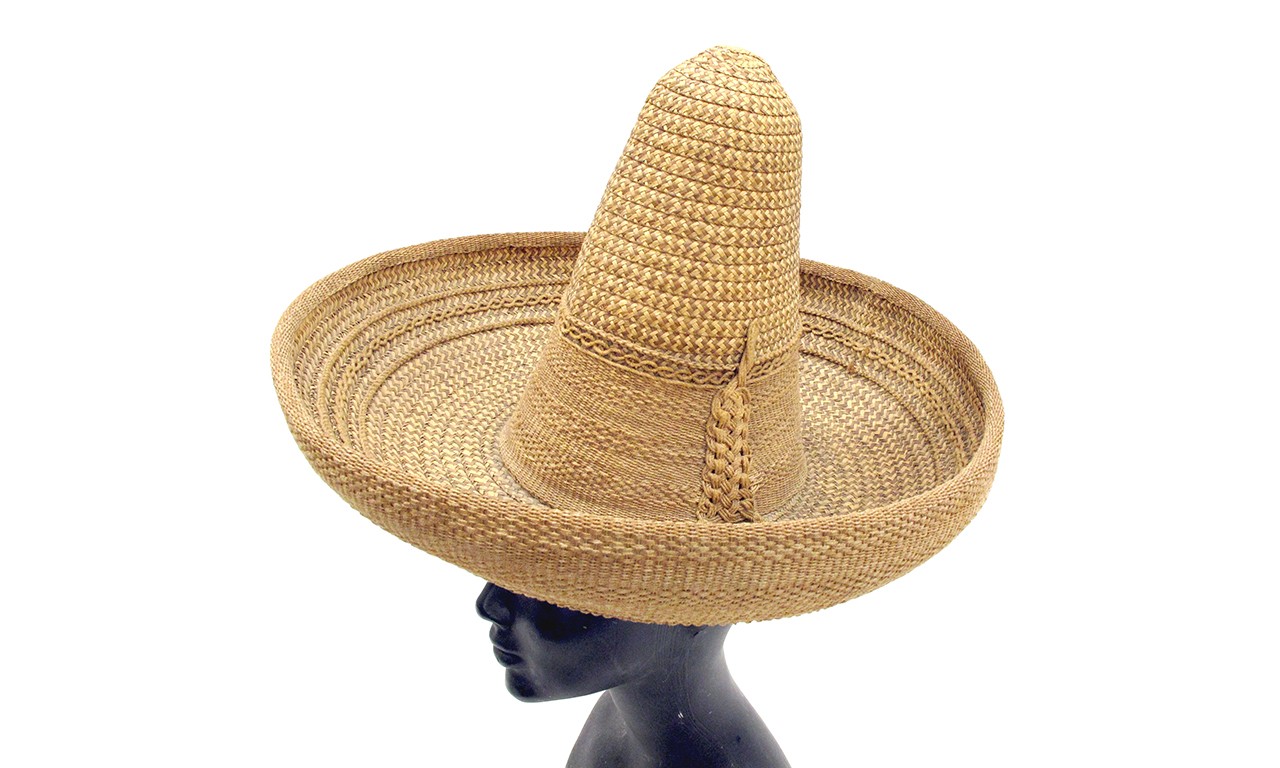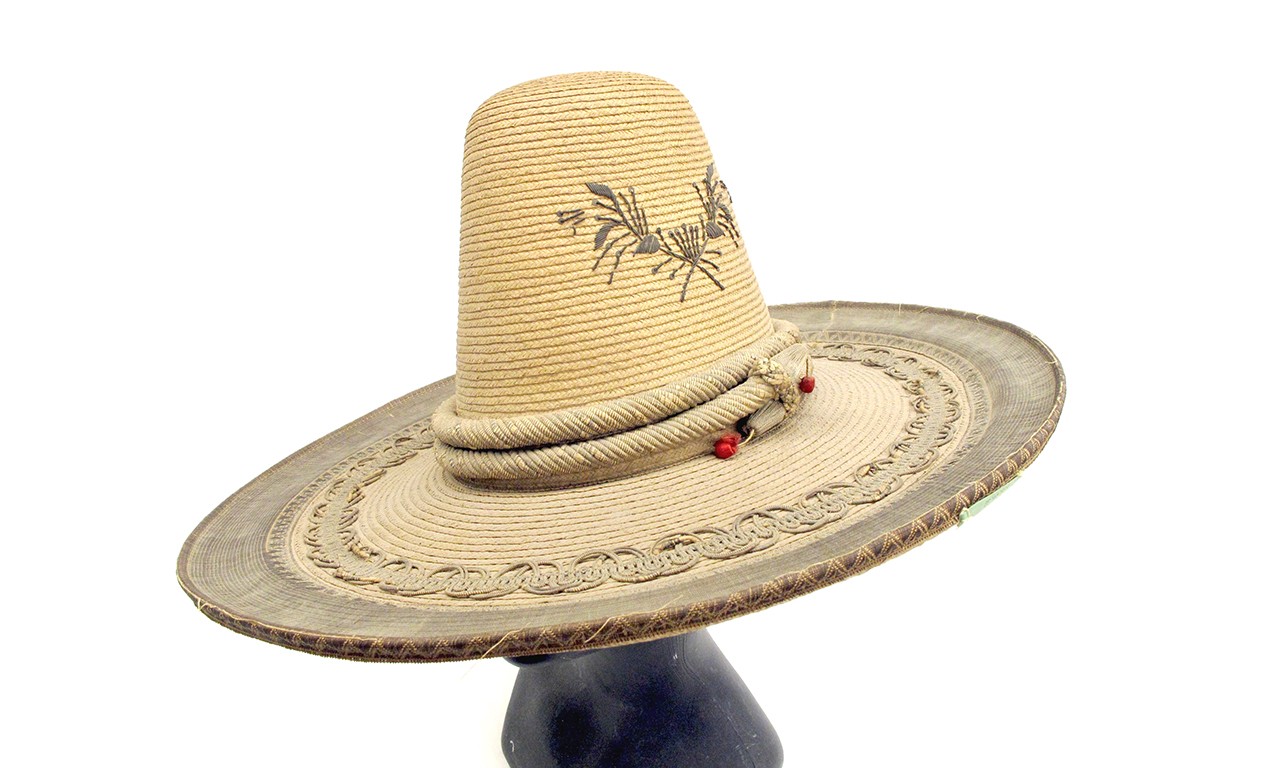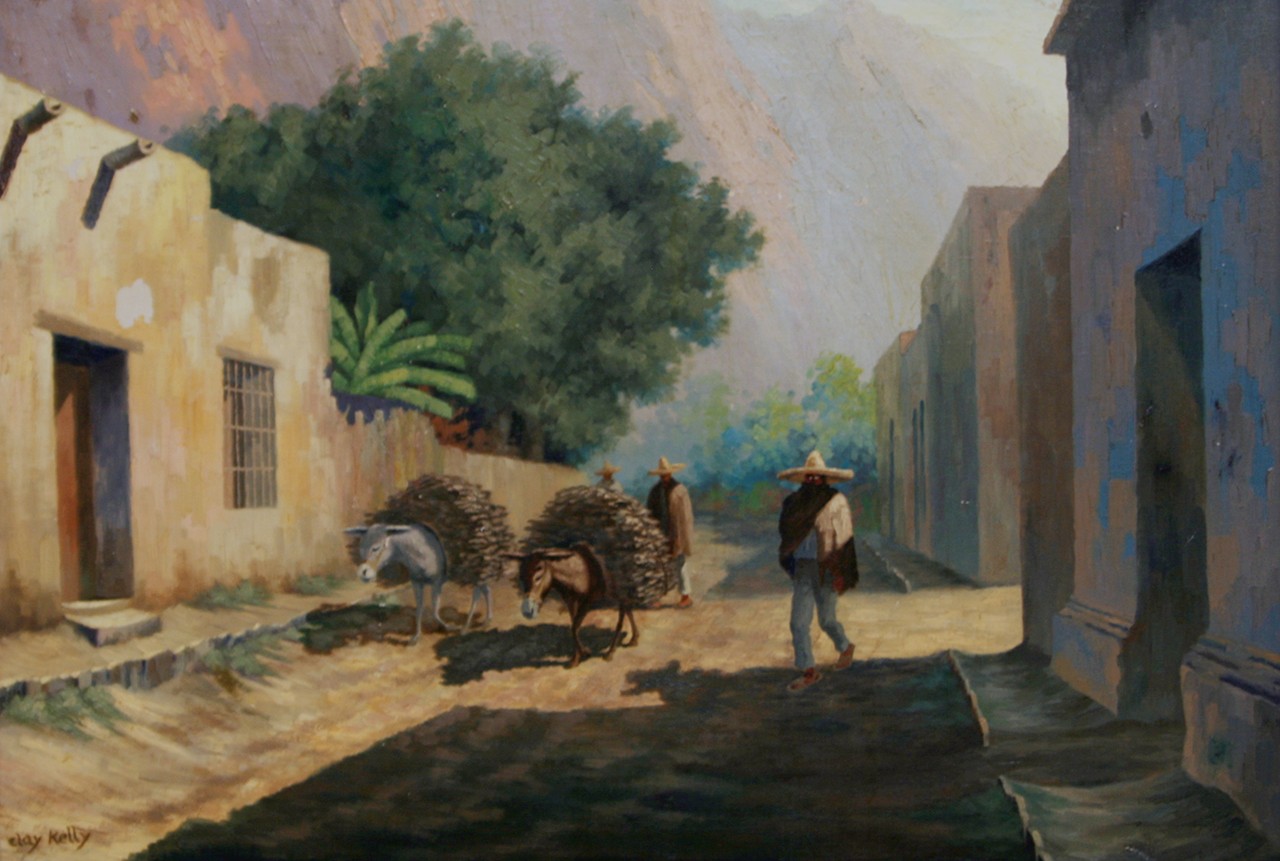 |
Sombreros, c. 1900
Unknown Maker; Mexico
Felt, cotton, straw, sequins and horsehair
F78.44.3a,e
Bowers Museum Purchase |
Return of the Fifth
Though often confused as being a celebration of Mexican independence from Spain, Cinco de Mayo (May 5th) marks the victory of the Mexican army over a much larger colonial force from Napoleonic France. The holiday is popularly observed by people of Mexican descent in the southwestern United States and some regions of Mexico. Sombreros—which literally translate to “shade makers”—are one of the foremost Mexican cultural icons associated with the holiday. Though the hats have regularly been culturally appropriated and used negatively to stereotype Mexicans and Mexican Americans alike, they were historically used by just about every class within Mexican culture and earn their association to Cinco de Mayo through their wear by performers celebrating the holiday. In this post we look at a group of five sombreros in the Bowers Museum’s collection and the appearance of the hats in other Bowers objects.

| Trailer for Fiesta de Mexico, to be held 11 AM on Sunday, May 30 on the Bowers Museum's Facebook Live. |
Hat Trick
Wide brimmed hats have been used for sun protection since at least the 13th century when horse riders began to use headwear to battle the harsh sun of the Mongolian steppe. By the 15th century similar headwear was used throughout Spain. The best guess as to the origin of sombreros proper is that they were first created in the Americas based on the Cordovan hat, a wide brimmed hat traditionally worn in Andalusia. Unfortunately, the inventor of the sombrero is unknown. Different theories have circulated about its origin, but most believe that it came from either the Jaliscan capitol city of Guadalajara or was made elsewhere by Mestizos, likely for similar reasons to the original Mongolian use. Over time increasingly ornate sombreros came to be worn by Mariachi, performers of an identically named genre of Mexican folk music, and regularly during the jarabe Tapatío, the national dance of Mexico since 1920. Though the sombrero is no longer worn as a part of daily wear, it continues to be worn on special occasions and by Mariachi groups to this day.

 |
Sombrero, c. 1900
Unknown Maker; Mexico
Straw; 10 1/2 x 38 1/2 in.
F78.44.3c
Bowers Museum Purchase |
Shapely Brow
At least in relative terms, the definition of sombrero is as broad as its brim. The Cordovan hat that the sombrero likely evolved from rises abruptly into a crown which is not too dissimilar in shape to the much later boater hat—see the heads of your local barbershop quartet for reference. The sombrero’s crown, however, draws little from its historical antecedent. It is instead conical, climbing steeply to a top that is usually rounded but may be dented. Insofar as the angle of incline and height of the crest, sombreros are again variable. They often have a strap beneath the hat to secure it to the wearer’s head which was historically useful for dancers and farmers alike. Another distinguishing characteristic of the sombrero’s shape is that the brim is often slightly upturned at the edge. Originally added depending on whether it rained in the region that the hat was made, it has come to be an optional aesthetic feature over the years.

 |
Sombrero, c. 1900
Unknown Maker; Mexico
Straw, cotton and sequins; 8 3/8 x 20 x 18 x 23 in.
F78.44.3d
Bowers Museum Purchase |
Felt That
The wealth of diversity found in sombreros does not end there. First off, the hats were not uniformly made from the same medium. Those which were traditionally worn while one worked a field were made of straw to keep the wearer cooler and to be relatively cheap and easy to produce. Wealthier wearers donned felt sombreros which came to be more indicative of one’s prestige and could be customized to be any color imaginable. Designs are added to hats made of both mediums and are produced in a variety of ways. The sombreros in the Bowers collections are embellished with floral motifs and braided patterns but many other embroidery patterns are used. Contemporary sombreros are less limited in the scope of their designs, and often showcase horseshoes and intricate fan-like designs embroidered in gold or silver thread.
 |
Peón Life, early 20th Century
Clay Kelly (American, 1874-?); Mexico
Oil on canvas; 35 1/2 x 45 1/2 in.
33866
Gift of Mrs. Clay Kelly |
Flattened Sombreros
In addition to the three-dimensional examples in this post, sombreros make regular appearances in many of the photographs and artworks in the Bowers Museum’s collections. Clay Kelly had a particular interest in the headwear of various cultures around the world and while in Mexico both drew and painted a series on men wearing sombreros. Peón Life earns its title in reference to Mexican farm workers subjected to peonage. The Bowers’ robust photography collection shows workers in Mexico wearing sombreros and even includes a particularly thought-provoking series of abandoned sombreros shot at Mission Basilica San Diego de Alcala.
Text and images may be under copyright. Please contact Collection Department for permission to use. References are available on request. Information subject to change upon further research.





Comments